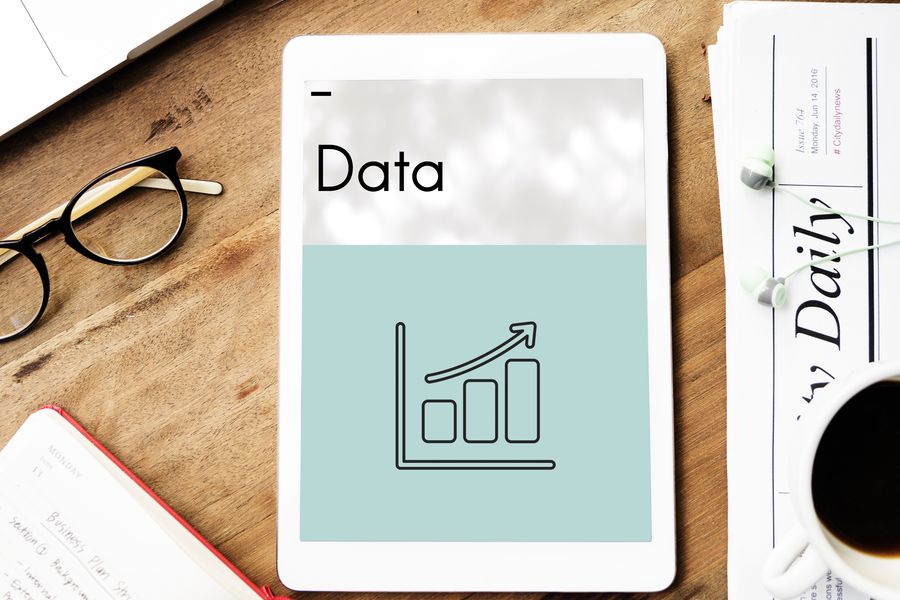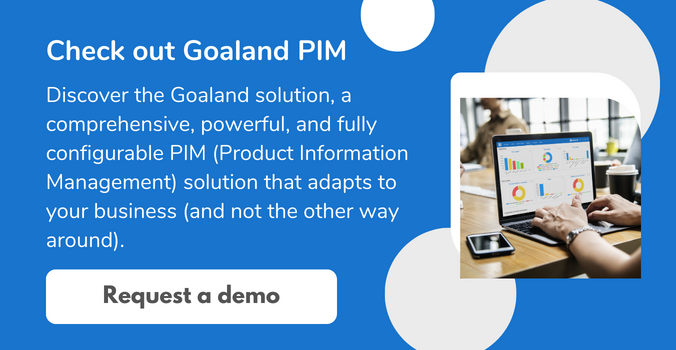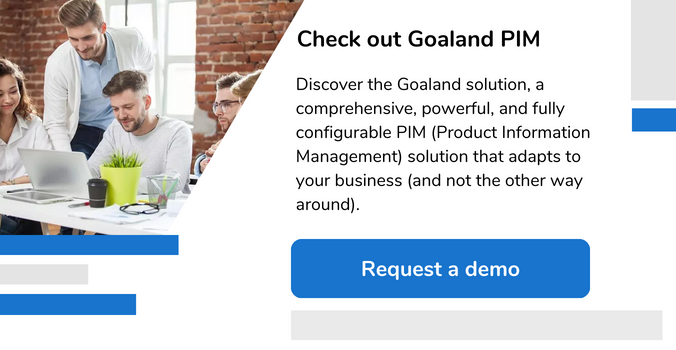Data is a fundamental « organizational resource1 » for your business: over 90% of businesses2 have adopted a data-driven approach and consider it as essential to their growth.
To guarantee the quality of data within a business requires the use of data governance which can be supported by PIM for effective implementation.
Read our definition of data governance, the steps involved, and the importance of using PIM for its implementation.
#Data governance: definition
Data governance is the range of policies, rules, and procedures regulating data and enabling an organization to manage and use their data appropriately: secured sharing, usage, storage… One important element is the improved definition of the rights and profiles of each contributor in its processing.

Among the key benefits of a data governance process are increased relevance in sales actions, improved compliance with regulations, and better decision making…
#The steps involved in implementing data governance
#Standardization of data
Standardization of data is part and parcel of a data governance process and presents many advantages: improved collaboration between different divisions, better use of data within the company, optimized data quality…
To achieve this, the different company divisions must define « a shared definition framework3 »:wording, units of measure, categories… to structure and standardize raw data from different information sources. They must also ensure that all company employees systematically respect the rules for formatting this data.
This standardization is important to guarantee a shared understanding of data. Each division has a clear view of data and can read, interpret, and analyze it effortlessly.
#Maintaining top quality data
Data governance involves clarifying the processes that guarantee the quality of data and maintaining this quality over time.
To achieve this, the business should clearly define its requirements in terms of data quality and the actions to implement to reach these targets: proofreading, checking, validation… They must also maintain this standard of quality by determining a frequency for cleaning their data: daily, weekly, monthly…
Finally, considering the constant increase in regulations, businesses must ensure that their data follows legal requirements to avoid legal issues relating to non-compliance.
#Organizing roles and access rights
Implementing data governance requires clear organization of the rights and responsibilities of each user. This will guarantee that users have secured access to the data they need within the company.

The business should identify the different profiles using data daily, determine the level of access required and indicate who can consult which data. They should also assign roles4 to each contributor: verification of compliance with regulations, quality inspection, standardization… If these roles are not clearly defined, the risk for the business is a drop in productivity: looking for error sources, reprocessing data, implementation of additional verifications…
They should also ensure that each contributor fully understands and accepts their responsibility in the implementation of this process. With these boundaries in place, depending on the roles and responsibilities assigned to them, each contributor can access the data they need, process it, and contribute to improving its quality.
#Data governance: the importance of implementing PIM
PIM (Product Information Management) solutions help businesses to implement effective data governance.
By centralizing all product information, the PIM becomes the company's central repository and facilitates the definition of clear processes for cleaning, organizing, and modeling product data on shared standards.
PIM also has many advanced features and in particular workflow and validation features. These characteristics allow you to organize the rights and roles of the contributors involved in maintaining the quality of product data: enrichment, optimization, validation, ensuring consistency… and to maintain the best quality of data over time.
Businesses using PIM attach increasing importance to data governance: 26% of businesses5 would like PIM publishers to assist them with their data and 15% would like to be supported to guarantee that their strategy complies with current regulations.
1
Veritas. Qu'est-ce que la gouvernance de l'information ?
2
Qu'entend-on par gouvernance des données et quelle est son utilité ? (2022, May 17). L'ADN.
3
Bonnas, M. (2020, December 22). Logiciel PIM ou comment penser sa stratégie de gestion de ses référentiels produit ? journaldunet.com.
4
El Hadji, M. G. Traçabilité et gouvernance des données. Deloitte France.
5
Montérémal, J. (2022, March 28). Gouvernance des données : les clés pour une gestion efficace de vos données. appvizer.fr.
6
Adeline. (2023, October 3). Mise en place d'un PIM : 6 erreurs à éviter absolument ! Synolia.
7
Gros, M. (2020, December 14). Gestion des données produits : des projets au long cours. Le Monde Informatique.
8
Baromètre - Implémenter une Solution PIM en 2020. Stibo Systems.








